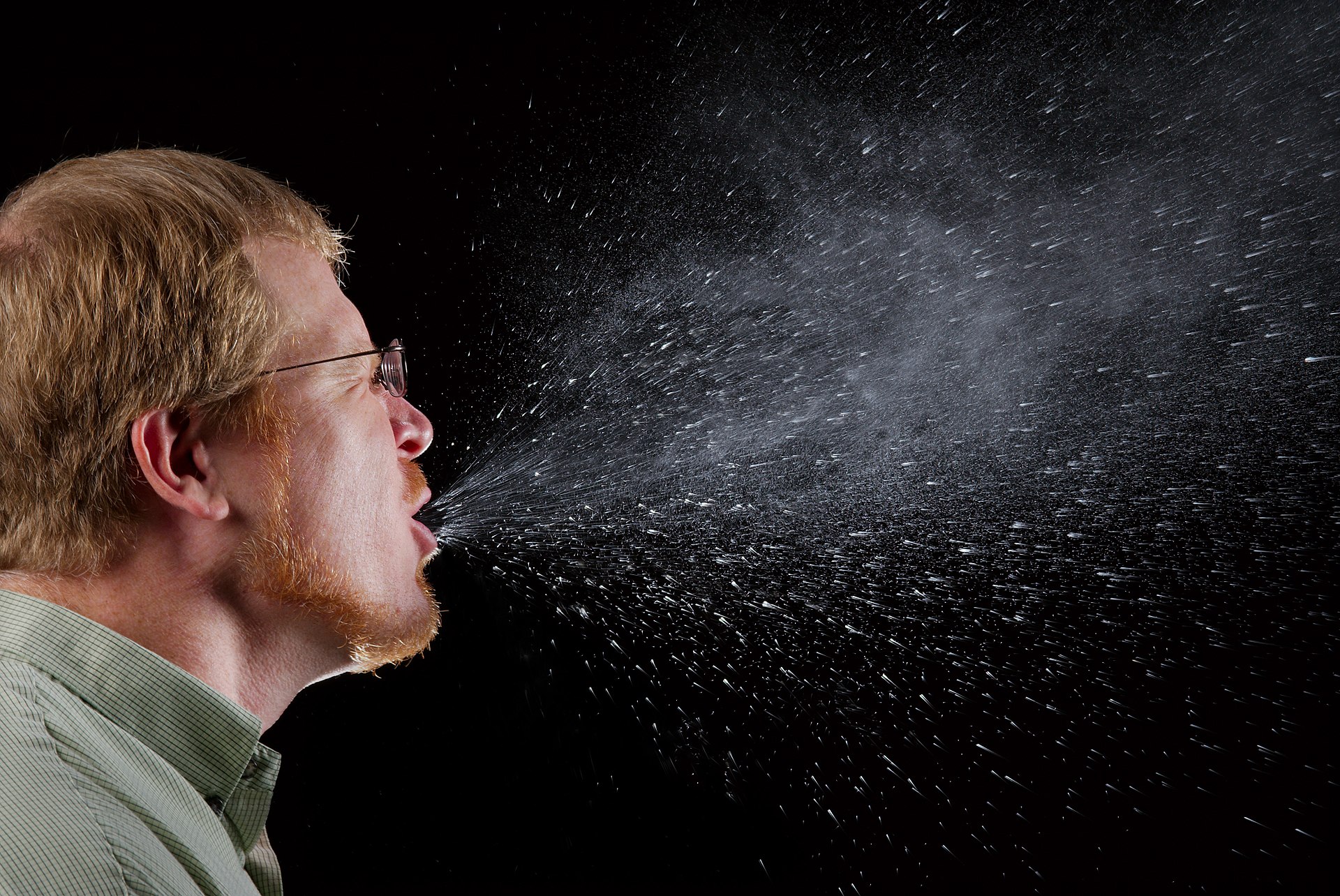This is an old revision of the document!
Table of Contents
Sneezing
A sneeze, also known as a sternutation, is a sudden, forceful, involuntary expulsion of air from the lungs through the nose and mouth caused by foreign particles irritating the mucous membranes of the nose or throat. Sneezing is the body's way of clearing irritants from the nose or throat. It can be provoked by a variety of things, including allergens, microbes, nasal irritants, inhalation of corticosteroids through a nasal spray, and drug withdrawal. This page will discuss the biological and pathophysiological aspects of the sneezing, severe implications of sneeze and its treatment methods, and a case study describing the implications, symptoms, and treatments on an individual who attempted to hold his sneeze.
Pathophysiology
Nose
The human body is trained to fight intruders and maintain a healthy internal system. Sneezing is a protective reflex. Foreign particles such as bacteria, dirt, dust, smoke, perfumes or other irritate the respiratory epithelium lining of the nose and trigger the immune system. A signal is sent out to release chemicals known as histamine and leukotriene (Scientific American, 2000)]. These substances are manufactured by inflammatory cells such as eosinophils and mast cells typically found within the nasal mucosa. Histamine travels to the site of irritation, in this case the nose, and binds with special receptors to produce inflammation or increased mucus production (Söldner, Horn, & Sticht, 2018). Allergic reactions with the nasal mucosa require the presence of IgE (allergy antibody specific for the allergen). This leads to fluid leakage from vessels in the nose, causing symptoms of congestion and nasal drip.
Brain The nerves then transmit a signal to the medulla, also known as the ‘brain’s sneeze center’, where the sneeze reflex is triggered (Seijo-Martinez, 2006). This is why when we are sleeping we are unable to sneeze, given that the neurotransmitters that are signaled to the medulla are inactive.
Head & Neck The nervous impulse travels up the sensory nerves and down the nerves controlling muscles in the head to go back and the neck to extend, leading to the rapid expulsion of air.
Abdominal & Chest The abdominal and chest muscles are then activated, compressing the lungs to produce a blast of air (WebMD, n.d.).
Tongue & Vocal Cords The high velocity of the airflow is achieved by the buildup of pressure inside the chest and with the vocal cords closed. The sudden opening of the cords allows the pressurized air to flow back up the respiratory tract to expel the irritants. This helps to remove offending particles in the nose. The back of the tongue is elevated to force the air out of the mouth and nose (WebMD, n.d.). However, in infected individuals, it also allows for the spread of the common cold, as innumerable viral particles are contained within each droplet of mucus expelled. Germs from a sneeze can travel up to 6 feet (CDC, n.d.).
Eyes The split second the air is being forced out, the cranial nerves link both the eyes and the nose to the brain. Therefore, the stimulus also triggers the eyelid muscles to locked shut, making it impossible to keep eyes open while sneezing (WebMD, n.d.).
Heart The moment a sneeze occurs, all the pressure built up in the abdomen gets released quickly. This increases the blood flow back to the heart, raises blood pressure, and lowers the BPM all at once.
Severe Implications of Sneezing
Because of the rarity of sneeze-related injuries, there is no recorded incidence. However, between 1948 - 2018 there have been 52 unique reports of sneezing-related injuries (Setzen & Platt, 2019). Of the cases reported 30% of the individuals had risk factors (Comorbidity) (Roselle & Herman, 2010) and 81% were males.
There are three causes/risk factors commonly associated with injury:
- Valsalva Maneuver - When the airways are voluntary closed, and the pressure created by expiration is redirected towards soft tissue, injuries can occur. Because of the closed airway this redirected pressure becomes 20x greater than a normal sneeze (Rahiminejad et al., 2016).
- Comorbidity - Makes an individual susceptible at site of injury. Examples include trauma and infection.
- Gender - Increased lung size and therefore pressure during expiration makes males more at risk for injury.
Injuries can be divided into six areas: 1) Thoracic cavity, 2) Throat, 3) Ears, 4) Eyes, 5) Intracranium, 6) Other. The region with the most unique number of cases are the eyes (27%) (Ababneh, 2013) and the least are the ears (6%) (Comacchio & Mion, 2018).
Examples of injuries from the six regions include Rib Fractures, Laryngeal Fracture, Orbital Emphysema, Transient Ischaemic Attack, Vertigo, and Acute Myocardial Infarction (Setzen & Platt, 2019). Notable individuals with reported injuries as a result of sneezing include former Blue Jay player Kevin Pillar, baseball HOFer Sammy Sosa, and actor Billy Crystal.
References
Roselle, H. A., & Herman, M. (2010). A hearty sneeze. The Lancet, 376(9755), 1872. doi: 10.1016/s0140-6736(10)61161-0
Rahiminejad, M., Haghighi, A., Dastan, A., Abouali, O., Farid, M., & Ahmadi, G. (2016). Computer simulations of pressure and velocity fields in a human upper airway during sneezing. Computers in Biology and Medicine, 71, 115–127. doi: 10.1016/j.compbiomed.2016.01.022
Ababneh, O. (2013). Orbital, subconjunctival, and subcutaneous emphysema after an orbital floor fracture. Clinical Ophthalmology, 1077. doi: 10.2147/opth.s44649
Comacchio, F., & Mion, M. (2018). Sneezing and Perilymphatic Fistula of the Round Window: Case Report and Systematic Review of the Literature. The Journal of International Advanced Otology, 106–111. doi: 10.5152/iao.2018.4336
Setzen, S., & Platt, M. (2019). The Dangers of Sneezing: A Review of Injuries. American Journal of Rhinology & Allergy, 33(3), 331–337. doi: 10.1177/1945892418823147
